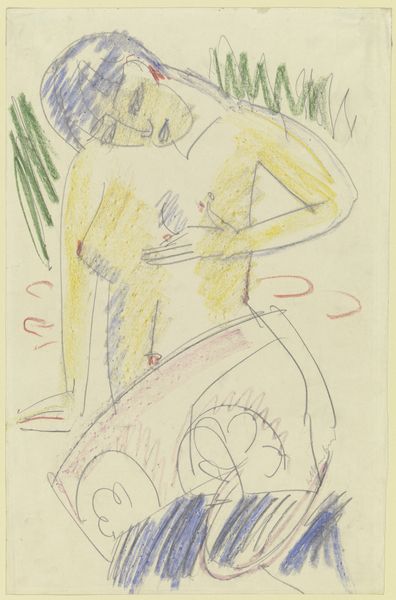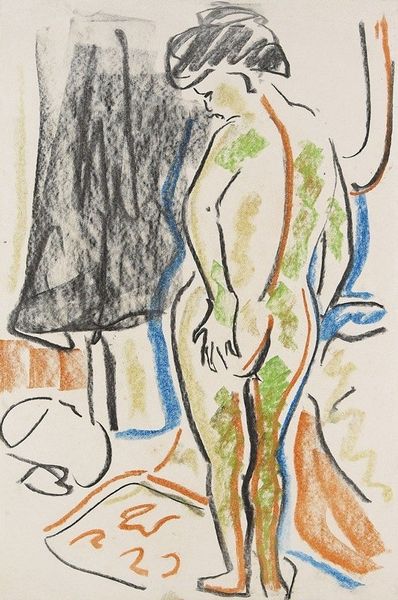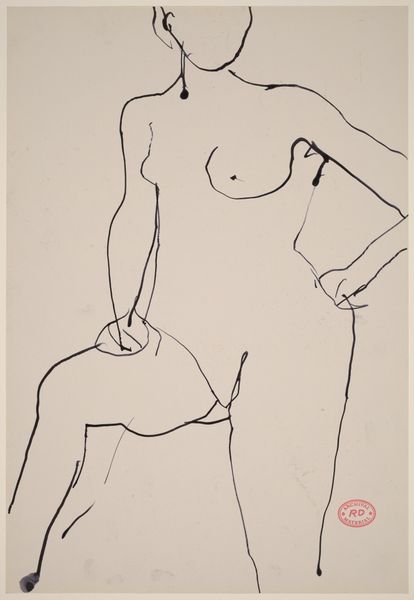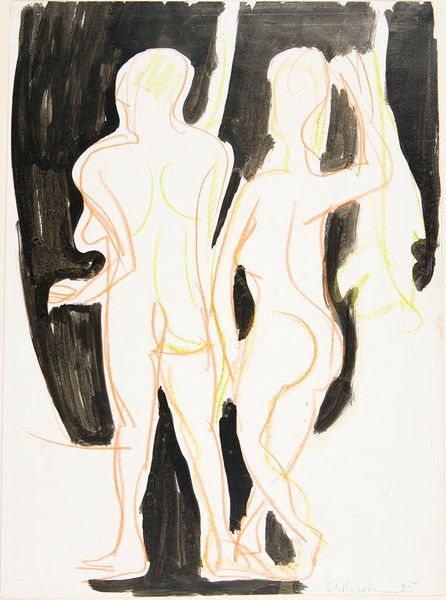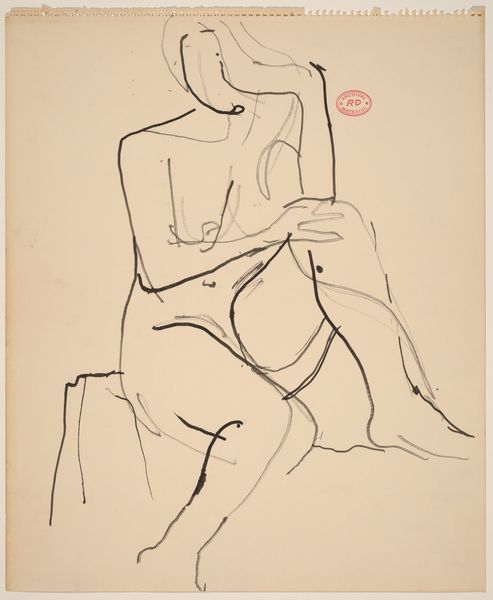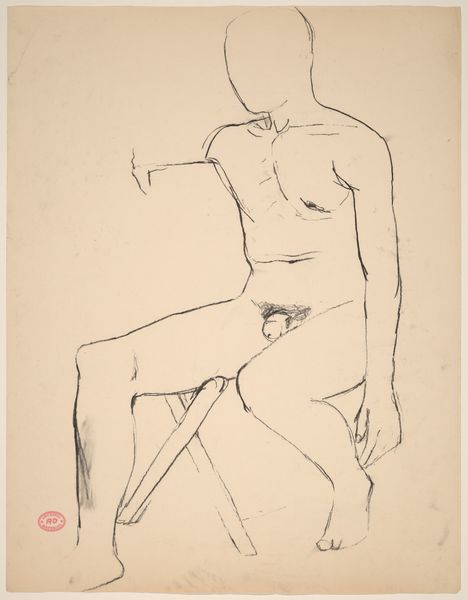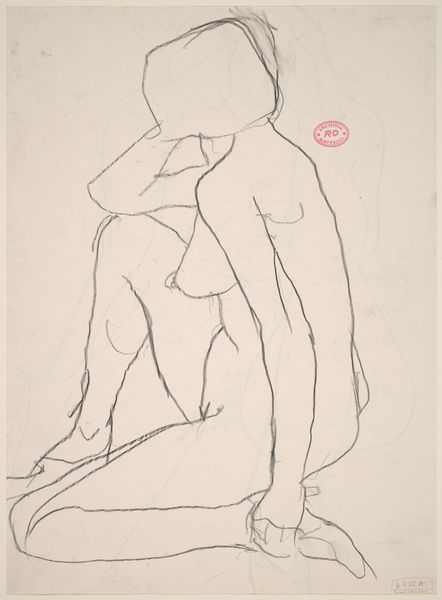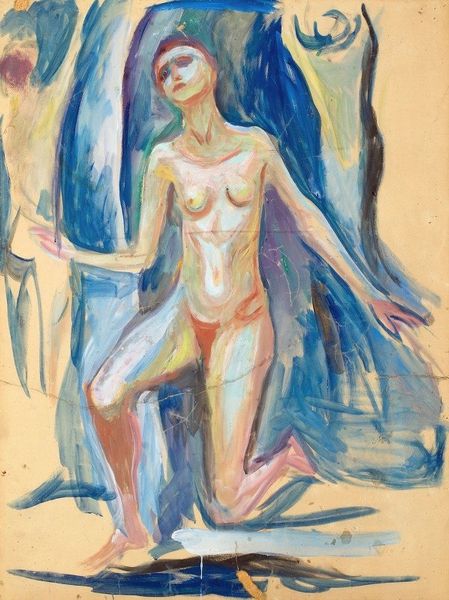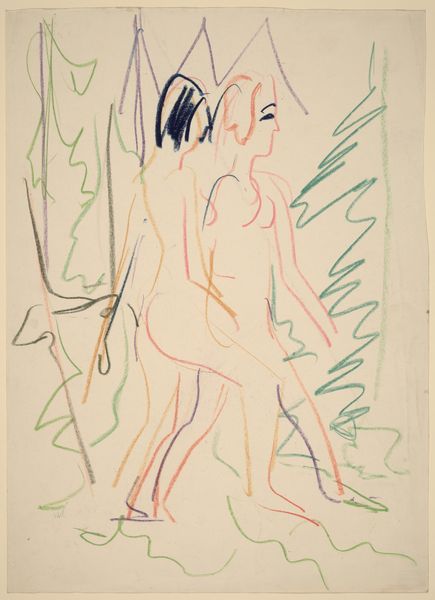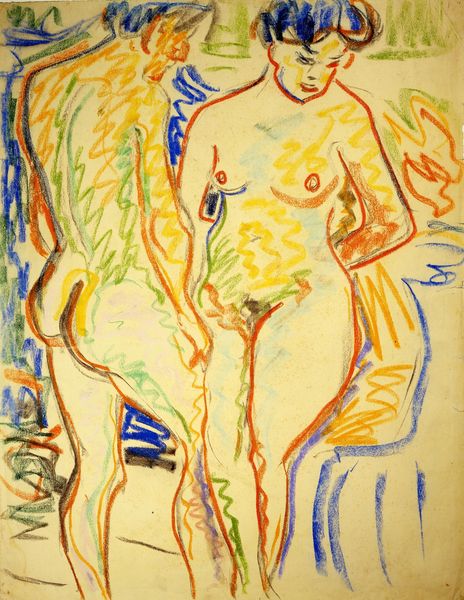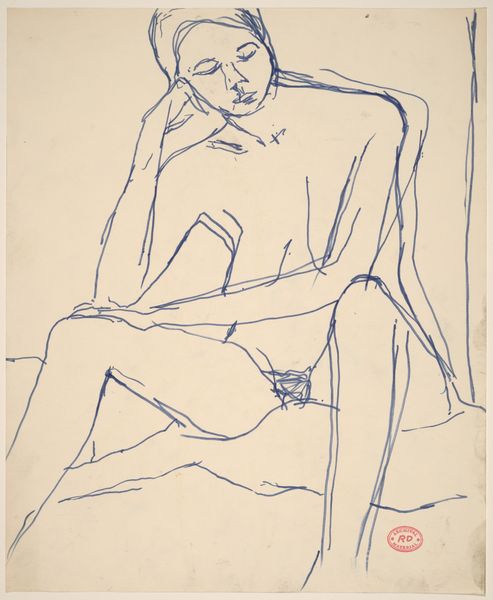
drawing, coloured-pencil, pastel
#
portrait
#
drawing
#
coloured-pencil
#
german-expressionism
#
figuration
#
form
#
female-nude
#
expressionism
#
line
#
pastel
#
nude
Copyright: Public domain
Curator: We're standing before Ernst Ludwig Kirchner's "After the Bath," created in 1914. It’s currently held in the Brücke Museum in Berlin. It’s executed using pastel and coloured pencil on paper. Editor: Hmm, it feels…unsettled. The angularity of the figures, the slightly jarring colors, it gives off a strange tension despite the intimate setting. Like I’m seeing something I shouldn’t. Curator: Yes, the visible lines create that effect, but note the careful construction—Kirchner uses line not only to delineate form but also to convey psychological states. The figures exist within this interplay between revealing and concealing. Editor: It’s true. I almost feel like those heavy black outlines are little cracks. And what's with those colors, that bright, acidic yellow and mauve? It is interesting, like bathing in lemon juice and wine, kind of lurid. Curator: The use of colour here destabilizes the conventional understanding of "the nude" within the portrait, which would require naturalism and a placid aesthetic. Note the sharp colour contrast and how that effects dynamism. Editor: True! And yet… those drooping heads suggest fatigue or contemplation. I can almost feel their boredom! Maybe these are urban mermaids waiting to jump into the city’s dirty river rather than their baths? I'd hate to wash myself in such a clinical surrounding afterall. Curator: You bring an interesting reading. By disrupting conventional notions of beauty and utilizing harsh, contrasting hues, he rejects the idealism found within the academic art world of the period. Editor: Well, now that I spend more time with them, I want to find out all about their story! It shows the magic of this artist. I keep asking what those women do... they look as if ready to revolt at any point. The image is more a puzzle than a portrait; maybe it is a reflection of this artist's mind in such an hectic time. Curator: Ultimately, Kirchner delivers a sharp representation that challenges the viewer's comfort and expectations regarding traditional form and artistic practices. Editor: So this innocent “after the bath” actually contains revolutionary aesthetics? Thanks, I might think about my next one.
Comments
No comments
Be the first to comment and join the conversation on the ultimate creative platform.
